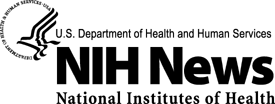 |
|
|
FOR IMMEDIATE RELEASE:
May 16, 2000 #00-03 NIEHS CONTACT:
Bill Grigg (301) 402-3378 16 May 2000: Peer Review Set for NTP Studies May 18; Discussion May 24 on Recommendations for Animal Studies on DNA-Based Therapies, Herbs, Emissions from Cellular PhonesRecent safety studies by the National Toxicology Program (http://ntp.niehs.nih.gov/) will be peer-reviewed at an open, public meeting May 18 by a subcommittee of the NTP Board of Scientific Counselors (http://ntp.niehs.nih.gov/go/9979). The studies are of the sedative chloral hydrate (http://ntp.niehs.nih.gov/go/14881); the moth ball ingredient napthalene (http://ntp.niehs.nih.gov/go/14877); the meat and fish preservative sodium nitrite (http://ntp.niehs.nih.gov/go/14867); an ingredient in hard or high temperature resistant plastics p,p'-Dichlorodiphenyl Sulfone, and indium phosphide, which is used in making solar cells, semi-conductors, lasers and photodiodes. The studies to be peer reviewed may be read at http://www.ehponline.org/. Then, on May 24, the board will meet to discuss and review NTP activities. Among the agenda items is a discussion of testing recommendations for future studies- with opportunity for comment from the public. Both public events will be at the NTP's headquarters, the National Institute of Environmental Health Sciences (http://www.niehs.nih.gov), in the Rodbell auditorium of the Rall building, the NIEHS' main administrative and laboratory facility 111 T. W. Alexander drive, Research Triangle Park, N.C. Both meetings begin at 8:30 a.m. At the May 24 meeting, the board will review the current activities and status of the NTP Center for the Evaluation of Risks to Human Reproduction (http://cerhr.niehs.nih.gov/index.html) and will discuss and hear public comment on recommendations for future NTP study in several areas including DNA-based therapies, dietary supplements, cellular phone radiation emissions and occupational chemicals. The Food and Drug Administration (http://www.fda.gov) Early studies of DNA-based products involved critically ill patients in whom long-term safety was a secondary issue. However, more recently, DNA vaccines and synthetic oligos have been developed for use in relatively healthy children and adults, making long-term safety a dominant concern. Cellular phones are regulated by the FDA as radiologic devices. There are now 80 million American users of cell phones, with 25,000 being added each day. However, FDA is concerned about the adequacy of the data for making regulatory decisions about these evolving devices. [For further information on the cellular phone request, see http://ntp.niehs.nih.gov/htdocs/Chem_Background/ExSumPdf/Wireless.pdf (http://ntp.niehs.nih.gov/htdocs/Chem_Background/ExSumPdf/Wireless.pdf) Also to be discussed at the May 24 meeting: The National Cancer Institute (http://www.cancer.gov/) The Occupational Safety and Health Administration (http://www.osha.gov) The draft agenda is at http://ntp.niehs.nih.gov/go/14825 (http://ntp.niehs.nih.gov/go/14825). |
|


